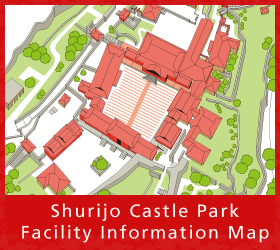Vicinity of the Seiden
Home > Facility Information > Vicinity of the Seiden
Free Admission Area
Feeling the Historical Period of the Ryukyu Kingdom
There are various places to see in the area around the Seiden, such as the Iri-no Azana, an observation point where you can command a view of Naha City. Every morning at Hoshinmon, there is a gate opening ceremony called the Ukejo.
Kofukumon / Shicha-nu Una / Suimui Utaki / Keizuza and Yomotsuza / Iri-no Azana / Kyo-no Uchi / Hoshinmon / Uekimon / Kyukeimon / Bifukumon・Keiseimon
Kofukumon
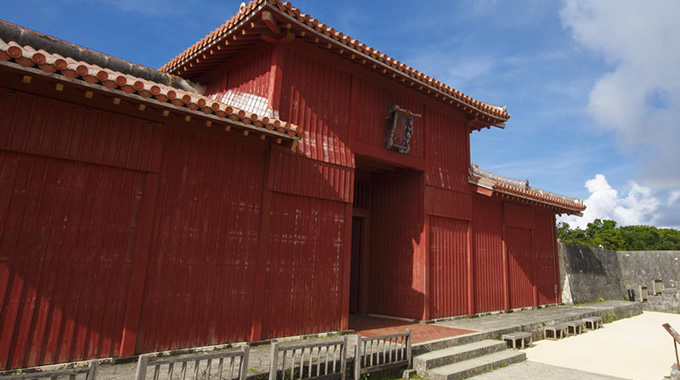
Kofuku means to “spread good fortune”. Kofukumon is the fourth gate leading up to the castle and is also known as Naga Ujo. The structure itself functions as a gate and this style is unique to the castle gates at Shurijo Castle.
The view in front of this gate commands one of the best sights within the castle, with the Ryutan Pond reflecting the lush greenery of the Hantan Yama before your eyes, and the Okinawa Prefectural University of Arts is also visible. To the east is the roof of the Benzaitendo, the Somon gate of Enkakuji Temple, and in the distance are the green hills of Torazuyama and Bengadake.
The year of construction is unknown, but the gate was once removed towards the end of the Meiji Period (1868-1912) and reconstructed again in 1992. During the period of the royal government, the building housed offices of Jishaza, which managed shrines and temples, and Okumiza, which mediated property disputes among the Shizoku, or the privileged class. Today, the building is used as a ticket office for the Shurijo Castle.
Shicha-nu Una
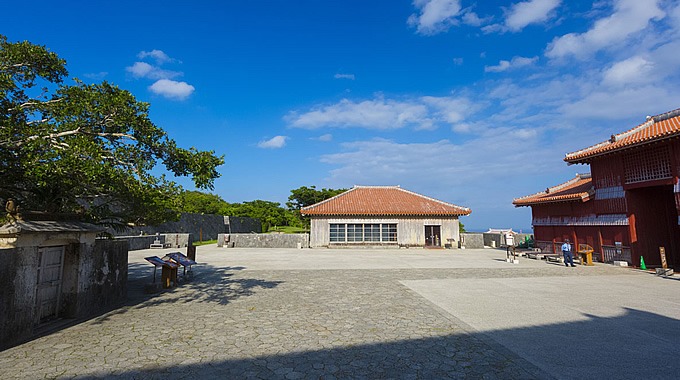
In the Okinawan language, Shicha-nu Una means the “the lower court”.
This is the square that leads to the main Una court at the Shurijo Seiden and was the waiting area during various rituals and functions held in front of the Seiden. While the Seiden was under construction, the area was used to store building materials. Presently, the area is used during events and other functions held within the castle.
Suimui Utaki
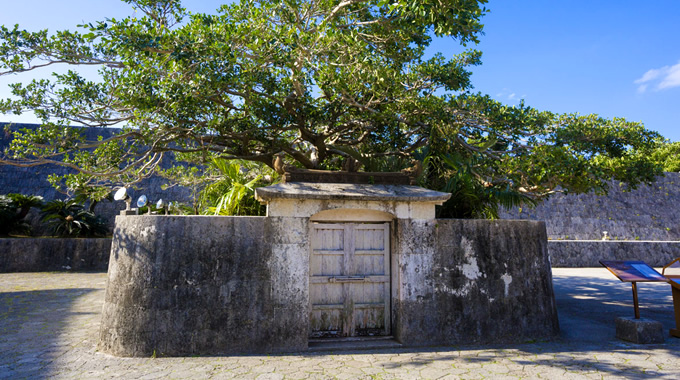
The sacred worshipping site at the front of the castle wall is called the Suimui Utaki. According to Ryukyu Kaibyaku Shinwa (Ryukyu creation myths), the sacred Suimui Utaki site was created by a god. Within the castle grounds, it is said that there were ten places of worship, including this one.
There are numerous writings related to Suimui Utaki written in the Omorosaushi, the oldest collection of Ryukyuan songs and ballads. The Suimui Utaki was restored in December of 1998.
Keizuza and Yomotsuza
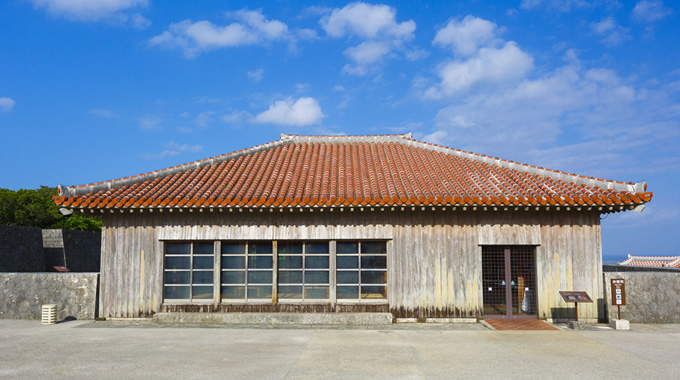
The building on the western side of Shicha-nu Una housed the offices of Keizuza and Yomotsuza.
The Keizuza managed records of family lineage of the Shizoku, or the privileged class, while the Yomotsuza managed the goods and materials necessary within the castle grounds.
The building was reconstructed in the year 2000, and today, it functions as a rest area and information office.
Iri-no Azana
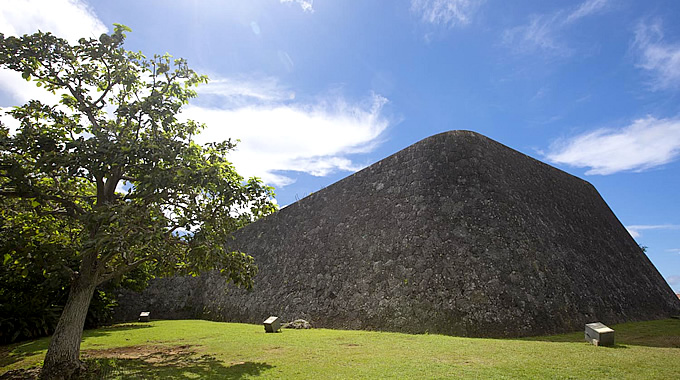
This observation point was established on the western side of the castle walls, at an altitude of approximately 130 meters above sea level. From here, the observer can command a view that includes the city of Naha and the port, as well as the Kerama Islands in the distant horizon.
Iri-no Azana is also known as the Shimasoe Azana, and long ago, flags were raised here and a bell was struck to signify the time. This is the best place to view the castle grounds as well as outside the castle.
Kyo-no Uchi
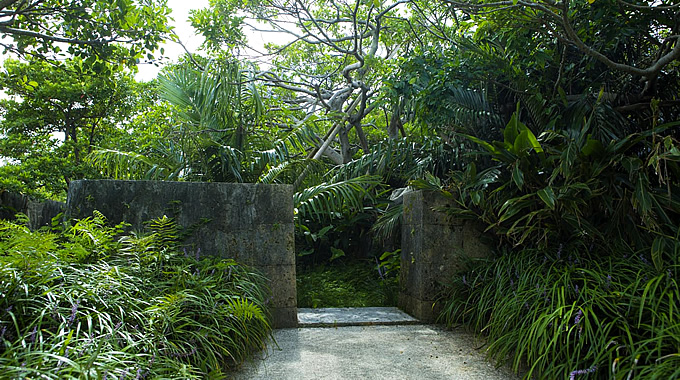
On the other side of the stone walls to the south of Shicha-nu Una is Kyo-no Uchi, the largest area within the castle grounds for religious ceremonies.
The location is said to be the place of origin of Shurijo Castle. Here, Kikoe Okimi, the highest priestess of a faith that was unique to the Ryukyus, and the three priestesses, Oamushirare, prayed to the gods for the prosperity of the royal family, safe voyages, and abundant harvests.
Hoshinmon
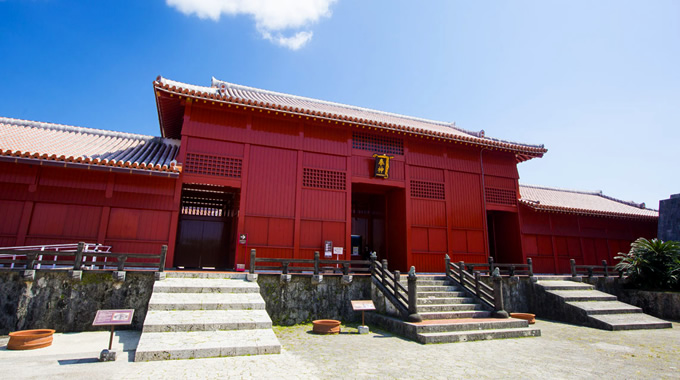
The meaning behind the name, Hoshinmon, is “a gate to respect the gods”. This is the last gate on the path that leads to the Una at the Shurijo Seiden. There are records that stone handrails were completed in 1562, and thus, the construction of Hoshinmon was before then. Later, in 1754, it underwent improvement work following the Chinese system. The structure was removed towards the end of the Meiji Period (1868-1912), but the exterior was rebuilt in 1992. Presently, it is used as a facility to manage the affairs of the park.
Another name for the Hoshinmon is Kimihokori Ujo. To the left (the north side), was the Naden, a room that handled the accounts of medicinal goods, tea, tobacco, etc. To the right (the south side), was used for Kimihokori rituals and ceremonies within the castle grounds.
The passageway at the center was only for the king, the Chinese investiture envoys, and other high-ranking individuals. Other officials entered through the passage on both sides.
Uekimon
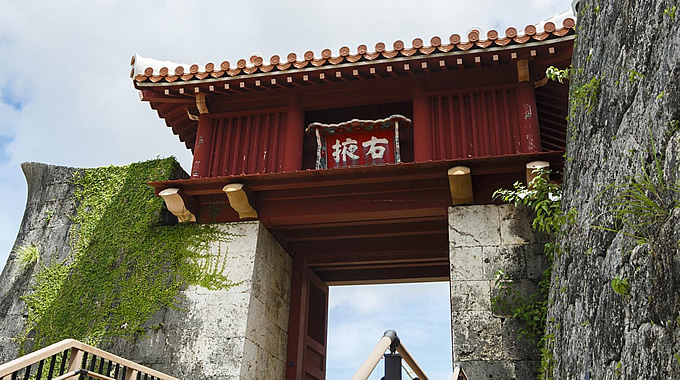
Uekimon connects directly to the Kankaimon, Kyukeimon, and Shukujunmon that can be seen below, and in the past, people reached the Ouchibara through the Shukujunmon. Uekimon is to the east of Kankaimon, and there is a stone-paved path of approximately 160 meters, that stretches fairly straight.
This gate is also known as Yosufichi Ujo, and is said to have been constructed around the 15th century. It was destroyed in the Battle of Okinawa, but in 1992, the portion of the castle wall below the Yagura turret was reconstructed, and in 2000, the Yagura was also reconstructed.
Presently, it is used as an exit from the Una in accordance to the touring route.
Kyukeimon
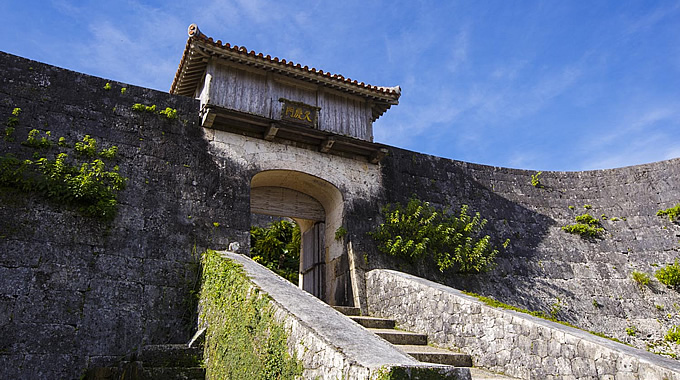
Kyukeimon is also known as Hokori Ujo. While the Kankaimon was the main gate, Kyukeimon functioned as a service gate where mainly women passed through. The gate was used on occasions when the king visited the temple to offer his prayers, or when he set on his journey to visit the Urasoe area and further north. The gate was constructed between 1477 and 1526 (during the reign of King Sho Shin), and was restored in 1983.
Presently, it is used exclusively as an exit in accordance to the touring route, but long ago, the gate was used by many people coming and going on a daily basis.
To the left-hand side of the gate is a water spring called Sunga Hija. Further to the left is the Ryuhi spring mentioned before. The rainwater from within the castle grounds flowed to this area where the water seeped underground, and eventually, the water flowed again through these springs.
Bifukumon
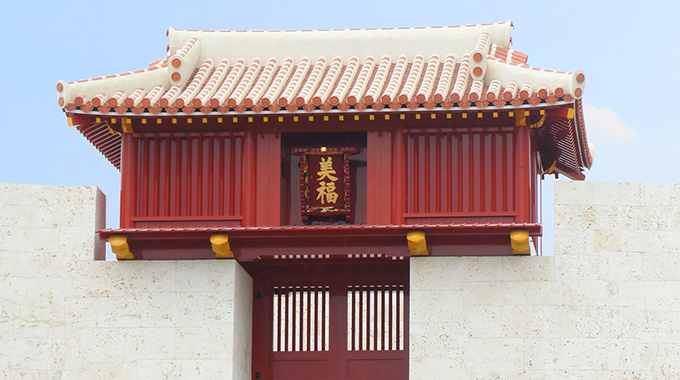
Built within the inner castle ward, it is believed that this was the eastern gate of Shurijo Castle until the Keiseimon was erected. It was also referred to as Akata Ujo since it faced the Shuri hamlet of Akata. After the Keiseimon was erected, it was informally referred to as the Shisa Ujo, as there were stone Shishi lions placed on both sides of this gate, just like that of the main gate, the Kankaimon.
Keiseimon
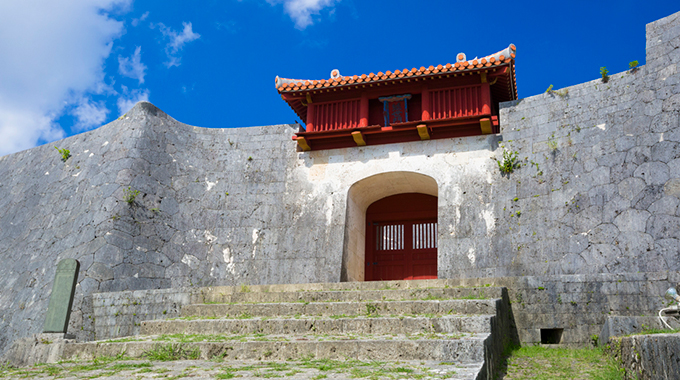
This gate situated at the outer ward is also referred to as Suetsugi Ujo. There are two stone monuments erected on both sides of the gate with inscriptions that describes how this gate was built in 1544 to protect the castle from Wakou raiders or pirates who were a threat at that time.
© Shurijo Castle Park All Rights Reserved.


